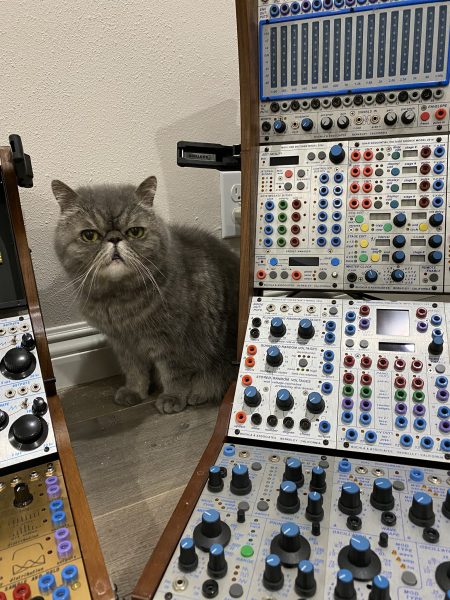
The lovely Lilith joins us today with an impressive array of Buchla 200-series modules.
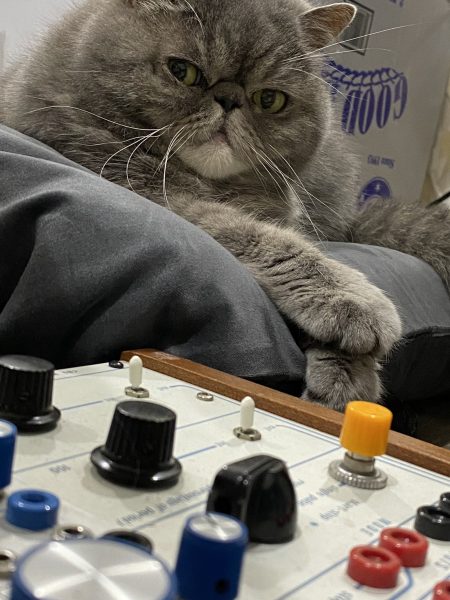
From horse_eunuchs (@MareNextDoor) on Twitter.
she’s learning tha synthasyzer


The lovely Lilith joins us today with an impressive array of Buchla 200-series modules.

From horse_eunuchs (@MareNextDoor) on Twitter.
she’s learning tha synthasyzer
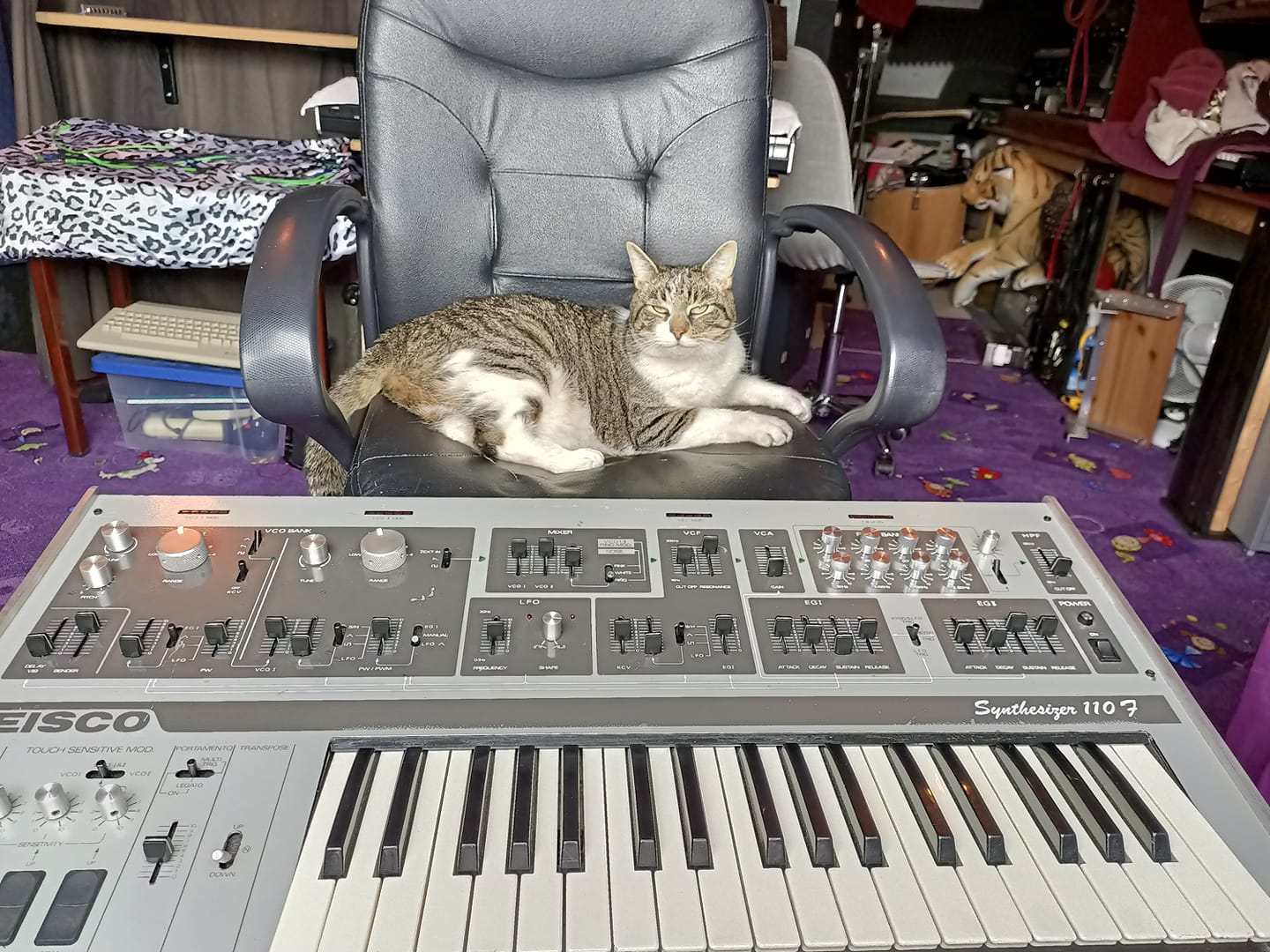
Borris proudly shows off his Teisco Synthesizer 110F. Submitted by Edda Jayne Hill via our Facebook page.
Borris posing with his fave synth.
He is very proud that he can operate it and get crazy sci-fi sounds from this thing, the other day he made it sound like a cat meowing
We at CatSynth would love to hear some of Borris’ patches.
The Teisco S110F is a two-oscillator analog synthesizer released by Kawaii (under their Teisco brand) in 1980. It is a classic-style subtractive analog synth with resonant VCF, a high-pass filter and the usual envelopes, LFO, and sample-and-hold for modulation.
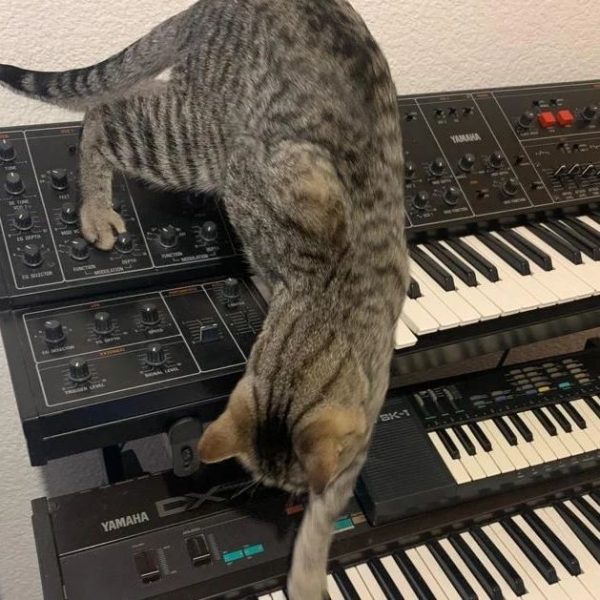
Saruman returns, this time playing vintage Yamaha CS-30 and DX7 synthesizers. The SK-1 from some of his previous appearances is also here.
From hdgenis on Instagram.
My cat playing my Yamaha CS30 and DX7 🎹

Satie returns this time with a fancy modular system featuring modules from Make Noise, Mutable Instruments, Bafaco, and Intellijel. The “David Lynch” panel is a nice touch as well.
This time via the Instagram page of Satie and his human Antoine Marroncles. You can see his previous appearances via this tag.
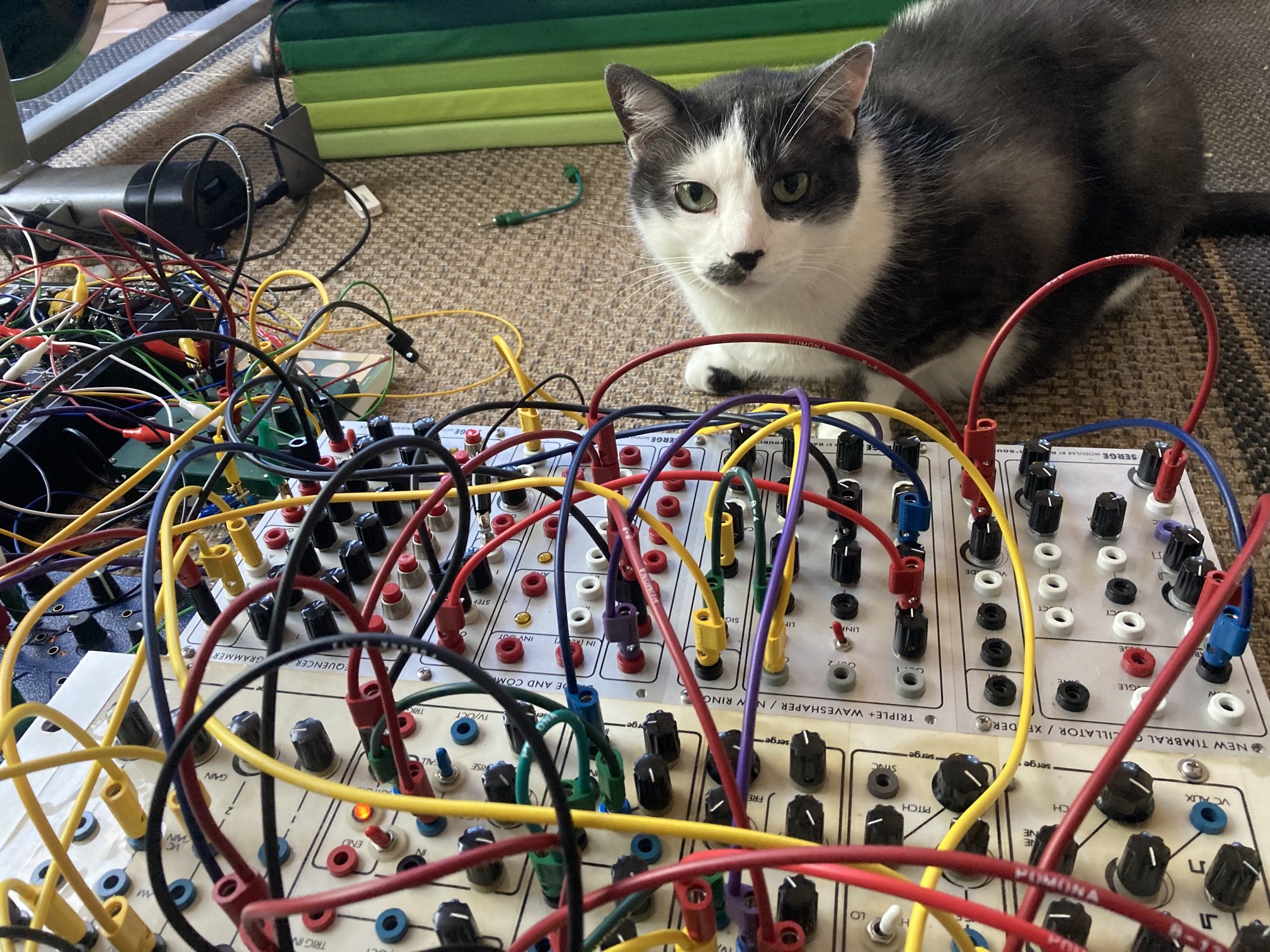
Orion shows off a complex patch on a Eurorack Serge system featuring modules by Random*Source. From Justin Sullivan (@justin3am) on Twitter.
We at CatSynth have long been curious about those Serge modules from Random*Source as a way of exploring Serge-style modular synthesis in more detail. The underlying premise is building up complexity from very simple building blocks like slope generators.
You can see all of Orion’s appearances via this tag.
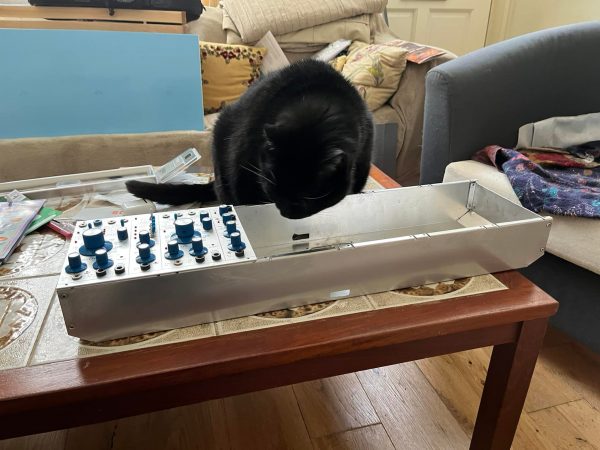
Milo inspects the case for an emerging Buchla modular system. From Keith Winstanley.
Milo has appeared several times on CatSynth – you can see all his appearances via this tag. Although he is a tuxedo cat, from this angle he looks entirely black. Either way, we know he and his human are going to have a lot of fun with this new modular system.

Here we see Bread (orange), and Tuna (black) finding comfy napping spots on a bass and a Korg Monologue, respectively. From thedigitalpurrgatory on Twitter.
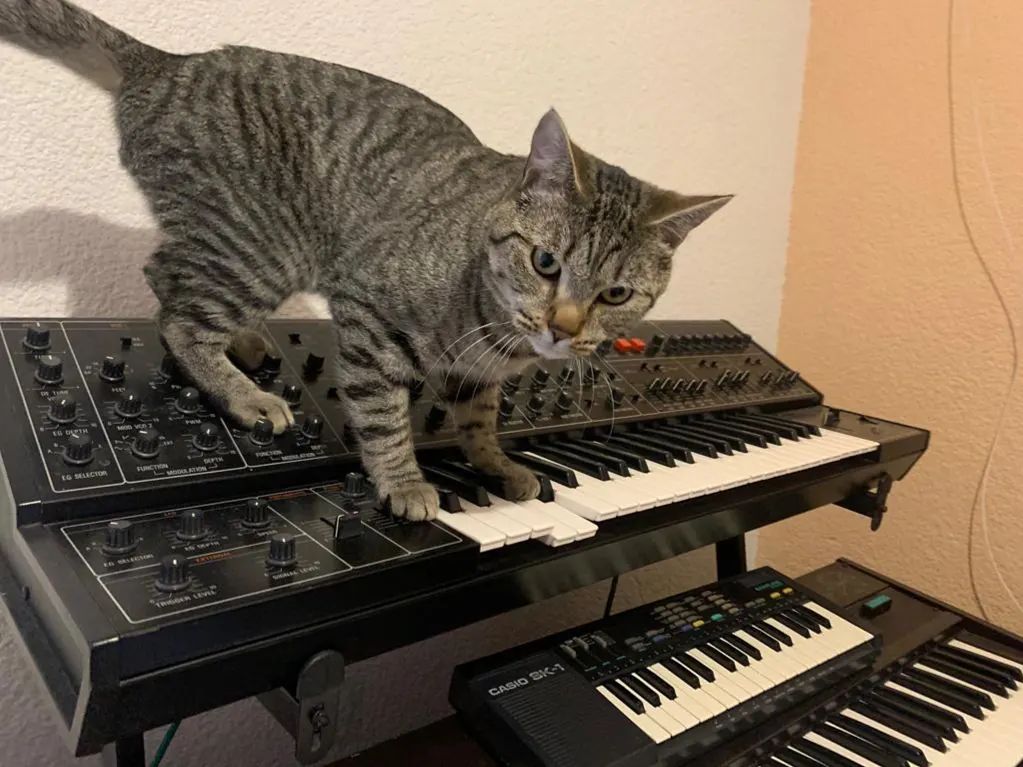
Saruman the cat plays a note or two on a vintage Yamaha CS-30 synthesizer. Below we see a Casio SK-1. From hdgenis on Instagram.
My cat on Yamaha CS30 🐈⬛🎹
The Yamaha CS-30 is a fully analog subtractive synth with two VCOs, to VCFs with lowpass and hi-pass, as well as VCAs, envelopes, etc typical of analog synths. What is interesting about it is the ability to route the various elements in a semi-modular fashion. The SK-1 is of course a rather coveted sampling keyboard from the early 1980s.
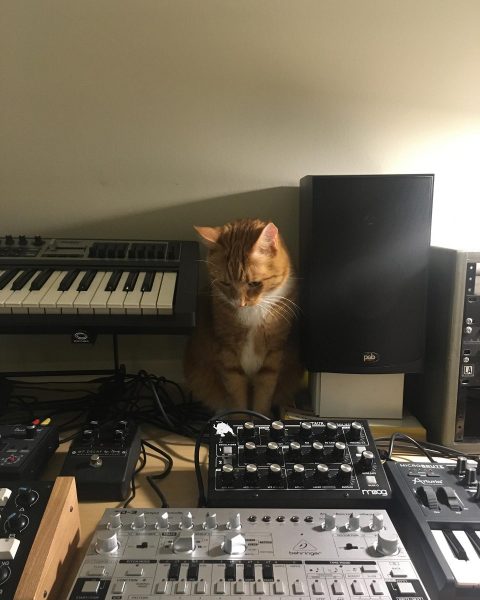
An orange cat looking down at a Moog Taurus and Behringer TD-3. We also see an Arturia MicroBrute. Moog MF Delay pedal, and more. From ben_mac on Instagram.